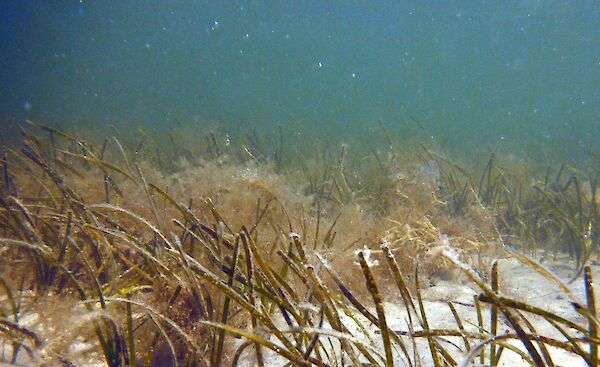Changing weather patterns threaten the Coastal Bays, challenging our ability to monitor indicators

Increasing rainfall, especially from intense storms, washes nutrients and other pollutants into Coastal Bays waters. Increased nutrients and temperature can cause algae to grow very quickly, leading to decreases in water clarity and low dissolved oxygen. Increased rainfall over the last several years has also made it difficult to collect data for seagrass. Seagrass extent is evaluated by aerial surveys, which must be conducted in clear weather during the growing season. The reduced number of clear days prevented the aerial surveys in 2018.
Multiple, interrelated factors contributed to the decline of water quality

An unusual winter algal bloom affected the northern bays. Beginning in November, Mahogany Tide (caused by the algae Prorocentrum minimum) began to discolor waters throughout the northern bays. When agitated, this high-nutrient water tends to produce foam that can accumulate around bulkheads and in canals. The bloom persisted through December and into 2019, reaching record levels of algae in the St. Martin River, Turville Creek, and Bishopville Prong. This widespread, prolonged bloom is likely a result of high nutrient levels and warmer-than-average temperatures in November and December.
Record rainfall impacts Coastal Bays water quality. 2018 was the third highest rainfall year recorded on Assateague. Increasing rain brings more runoff from the land. Heavy rains also lead to decreased salinity at many sites in the Coastal Bays which remain low through March–April 2019.
The Coastal Bays face continuing challenges

Many pollution sources to the Coastal Bays have been identified, and watershed plans are being developed to reduce pollutant loads to our Bays. In Chincoteague Bay however, 58% of the land or almost 60,000 acres drain from Virginia into the Chincoteague Bay. While Chincoteague Town Council is addressing wastewater treatment for the commercial area of Town with funding and permitting for a 100,000 gal. capacity treatment system, residential areas continue to be served by existing on-site septic systems. Also, continued monitoring of vital ecosystem components is problematic. New techniques for monitoring submerged vegetation are being explored since the ability to conduct aerial surveys is hampered by poor weather conditions and uncertain funding sources.
